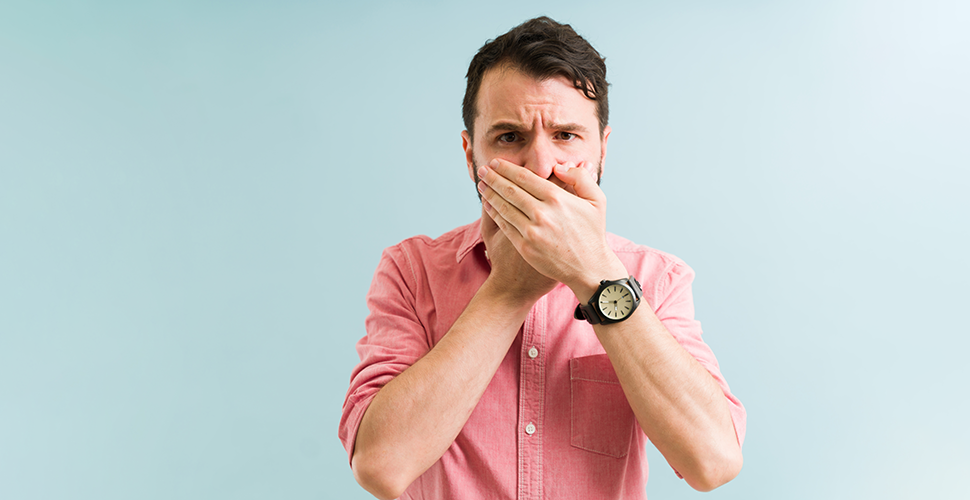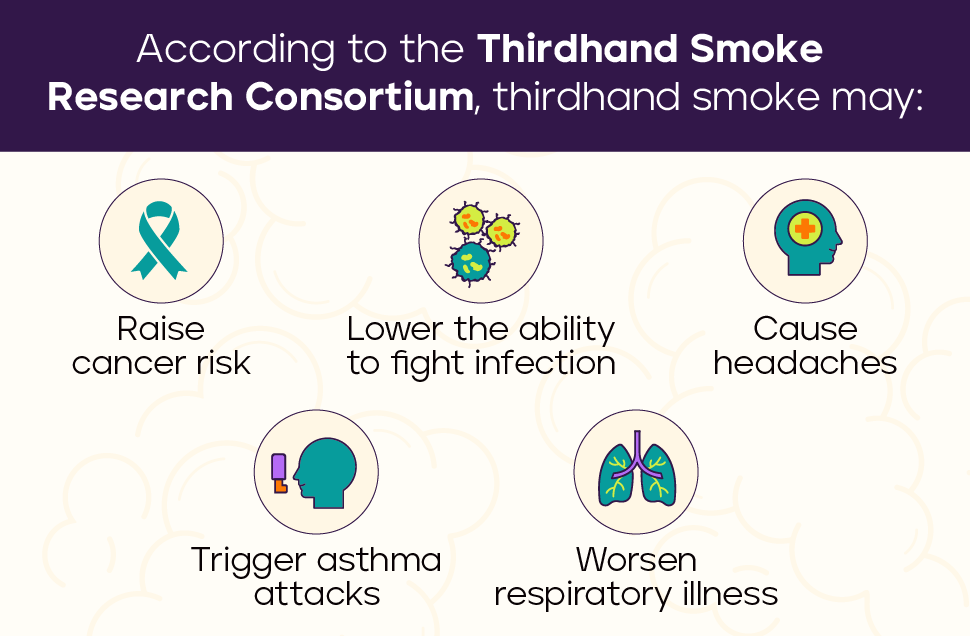At this point, the harms of secondhand smoke are well documented, and include higher risk of heart disease, stroke, lung cancer, and childhood asthma among many other issues.
But are you familiar with thirdhand smoke? You should be, and here’s why.
What is thirdhand smoke?
Thirdhand smoke is the chemical residue left behind by burning tobacco products and e-cigarettes. Although it might seem that a cigarette’s deadly toxins literally go up in smoke, that’s not true. That smoke needs to go somewhere, and it often lands on surfaces like tabletops, toys, floors, car upholstery, bedding—any place a smoker has exhaled.
Who is at risk of thirdhand smoke?
Anyone who comes into contact with thirdhand smoke can be at risk.
As people and pets come into contact with these surfaces, the residue sticks to skin and can be ingested, or gets released in the air again, where it can be inhaled. Exposure is most dangerous for babies, children, the elderly, and people with health conditions such as respiratory issues or autoimmune diseases.
How can thirdhand smoke affect your health?
In the face of increasing evidence about thirdhand smoke, a group of researchers formed the Thirdhand Smoke Research Consortium in 2011, bringing together experts from a variety of scientific disciplines. Since then, they’ve released findings that thirdhand smoke may affect your health in the following ways:
- Raise cancer risk
- Lower the ability to fight infection
- Cause headaches
- Trigger asthma attacks
- Worsen respiratory illness
How long does thirdhand smoke last?
The research group noted that toxic tobacco smoke residue can be found in homes even years after a smoker quits—and can affect subsequent homeowners who’ve never smoked. They suggested the residue can be 50 times higher in the apartment of a former smoker than in a new apartment with active smokers.
Why should you care about thirdhand smoke?
As an employer, you might be diligent about ensuring that smokers have a designated, outdoor area where smoke won’t affect non-smokers. While it is impossible to create rules about where employees can smoke when they’re not at work, it is important that employers share information about how their employees who smoke can protect their families.
Exposure to thirdhand smoke doesn’t just affect employees directly. Since it can be a health concern for other family members, particularly children and pregnant women, as well as those with health conditions, it is something employees, and their employers, need to understand.
How can you reduce the risks of thirdhand smoke?
Short of relocating all employees to new homes that have never been smoked in, what things can you do to reduce the risks that thirdhand smoke poses? Here are some steps to help reduce the risks of thirdhand smoke in the workplace:
- Continue restricting smoking areas. There are no federal laws regulating smoking in private workplaces; however, most states have passed laws to prohibit smoking at work or at least restrict smoking. As an employer, it’s imperative that you create a tobacco-free environment and enforce the policies you put in place.
- Remove residue from older smoking spots. Your company or organization may have had a “smoking lounge” at some point and it’s now a non-smoking break room. Take steps to remove residue by deep cleaning or replacing any carpeting, upholstery, and hard surfaces, for example.
- Educate your employees. Thirdhand smoke is a newer concept, and many people could be unaware that this residue might be a danger in their homes. Provide resources or educational materials related to how it can be removed—for example, it can’t be eliminated by airing out rooms or using air conditioners—so they can take steps to clean their homes properly. For more information, the Thirdhand Smoke Resource Center offers several tips you can pass along to employees.
- Provide effective resources to help employees quit. The best way to prevent further exposure to second or thirdhand smoke is to stop smoking all together. Providing employees with resources like the EX Program ensures they are able to quit with help when they’re ready.
If you’re looking for more ideas on implementing a tobacco-free workplace policy, download these 7 tips from the EX Program to learn more about getting management support, developing a comprehensive message, and identifying the right quit-tobacco program for employees.





